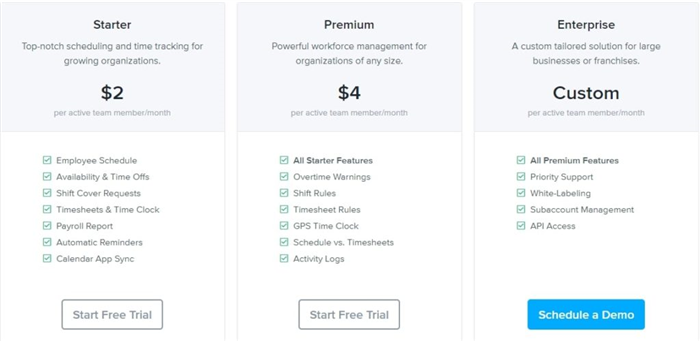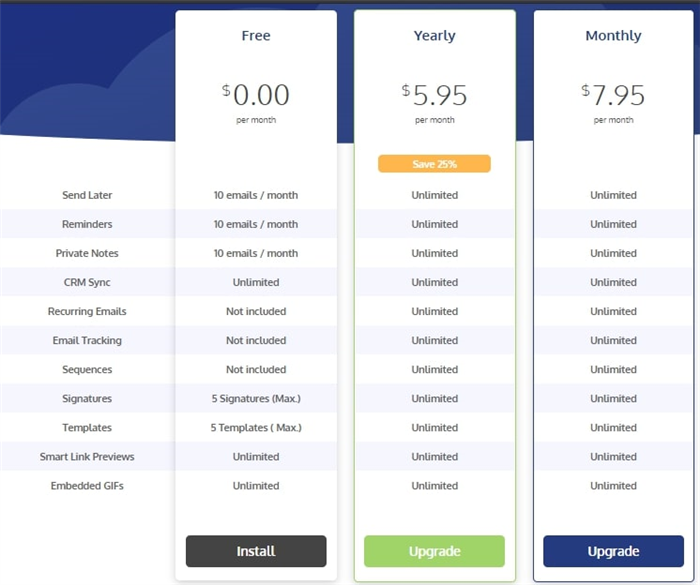Using Tiered & Introductory Pricing to Grow Your Business
In a competitive market, consumers always look for something that sets a product or service apart. We call this the Unique Selling Proposition (USP).
Customers assess the value of your product or service based on factors like price, quality, reliability, etc. As an unknown brand, you need to get customers to use your products or services to assess these factors.
This guide will discuss how we’ve used introductory and tiered pricing to gain a competitive edge. Specifically, we’ve used a tiered pricing plan that makes customer acquisition easier and proves the value of our solution. Let’s dive in.
What is tiered pricing?
Simply put, tiered pricing allows customers to purchase your product or service at different price points. Most businesses use tiered pricing to sell a product or service with more features at a higher price or to lock customers into contracts for a fixed period or at a minimum order value.
Here’s an example of a tiered pricing plan for a software company.

Price increases provide additional features. Some customers are willing to pay more for additional features regardless of the price.
Improving the value proposition increases the chance of upselling to customers. For example, if the annual plan costs significantly less than the monthly plan, some customers will choose to save money. However, if the added features have high value and the price increase is small, the customer will likely choose the more expensive plan.
Upselling to customers increases the Average Order Value (AOV).
Introductory pricing offers a low price to early adopters. This special pricing is a trade-off for customers who find it difficult to judge the quality of the product or service. Reducing the cost makes the offer more appealing.
As your reputation in the market grows, you can increase the price of your goods or services.
Startups often use the introductory pricing model. Examples of introductory pricing can be found on Kickstarter and deal sites like AppSumo.
With services, you can choose to keep customers at the introductory price or increase the price for all customers as you add more features.
‘Grandfathering in’ customers means they will need to pay more if they stop a contract and decide to use your services in the future. This reduces the likelihood of customer churn. However, introductory pricing is often provided at a ‘break-even’ price or with a minimal profit margin.
Increasing the price for all early adopters maximizes revenue from your customer base, but also increases the chance of customer churn. Some customers may leave if there is a price hike.
Define your Unique Selling Proposition (USP) before starting your business. This will make customer acquisition easier.
In my SEO agency, I offered guest posting services and conducted market research before starting the company. I established an attractive USP, which included ghostwriting guest post services, transparent and competitive pricing, a pay-on-results business model, and no contracts.
To achieve strong initial growth, I used introductory pricing to acquire clients and tiered pricing to upsell clients.
The introductory pricing structure was as follows:
– $100 per post for the first client
– $200 per post for the next three clients
– $250 per post for the next seven clients
The idea behind the introductory pricing was that as the business grew and reputation was established, the cost of services would increase. The low initial cost was possible due to minimal overhead.
The tiered pricing model was as follows:
– $200 for a single post on a site with a Domain Rating (DR) of 50-59
– $300 for a single post on a site with a DR of 60-79
– $400 for a single post on a site with a DR of 80-89
– $500 for a single post on a site with a DR of 90+
– $1,000 for a minimum of five articles a month on a site with a DR of 50+
A mix of tiered and introductory pricing made customer acquisition easier by upselling to larger orders.
Test the market once you have created an attractive offer.
I converted four clients in the first two months and locked them in at the price they entered. I increased the cost of five posts a month for the original client to $200 per post. All clients on the $200 per post price plan will remain there.
I started charging $250 per post at this point, while the tiered pricing structure remains in place to encourage companies that fit the ideal customer persona to enter on the preferred pricing plan.
An introductory pricing model is effective for startups and entering competitive markets. Providing a service that is cheaper than the competition is an easy customer acquisition strategy.
You may face a difficult decision when changing the cost of your offer for existing customers. I chose to keep the majority of my clients at their initial price point, which has resulted in their continued loyalty.
There are two ways to implement a tiered pricing model to grow your business.
I used tiered pricing to attract my ideal customer and upsell the service. The cost of a single guest post is affordable, but the pricing structure is more attractive for customers with a higher budget.
You can also use tiered pricing to increase the lock-in period, as seen with SaaS businesses like email automation platforms.

The example above illustrates tying tiered pricing plans to lock-in periods. Offering lower rates to long-term subscribers rewards loyalty and ensures cash flow.
A preference should be given to longer lock-in periods. However, a monthly subscription should still be affordable and provide a taste of advanced features. The more attractive the annual plan is compared to the monthly plan, the more likely customers will choose the more expensive option.
Regardless of the approach, tiered pricing models reward customer loyalty and increase their lifetime value.
In conclusion, tiered pricing makes businesses more competitive, allowing for effective upselling and increased average order value. However, this model may not be suitable for every business, as it is commonly used by service providers and less utilized by companies selling goods.
Additionally, a tiered pricing strategy can lower entry costs for new customers, reward long-term customers, or boost average order value. Meanwhile, introductory pricing is ideal for startups or businesses entering new markets. These pricing models can also be combined.
The cost of your products or services affects customer acquisition. This article highlights the importance of pricing in your business plan and how it can be incorporated as part of your unique selling proposition to improve customer acquisition.
Hello!
I’m Andrew Brooks, a seasoned finance consultant from the USA and the mind behind phonenumber247.com.
My career is built on a foundation of helping individuals and businesses thrive financially in an ever-changing economic landscape. At phonenumber247.com, my aim is to demystify the complex world of finance, providing clear, actionable advice that can help you navigate your financial journey with confidence. Whether it’s personal finance management, investment strategies, or understanding the nuances of market dynamics, I’m here to share insights and tools that can propel you towards your financial goals.
Welcome to my digital space, where every piece of advice is a step closer to financial clarity and success!
